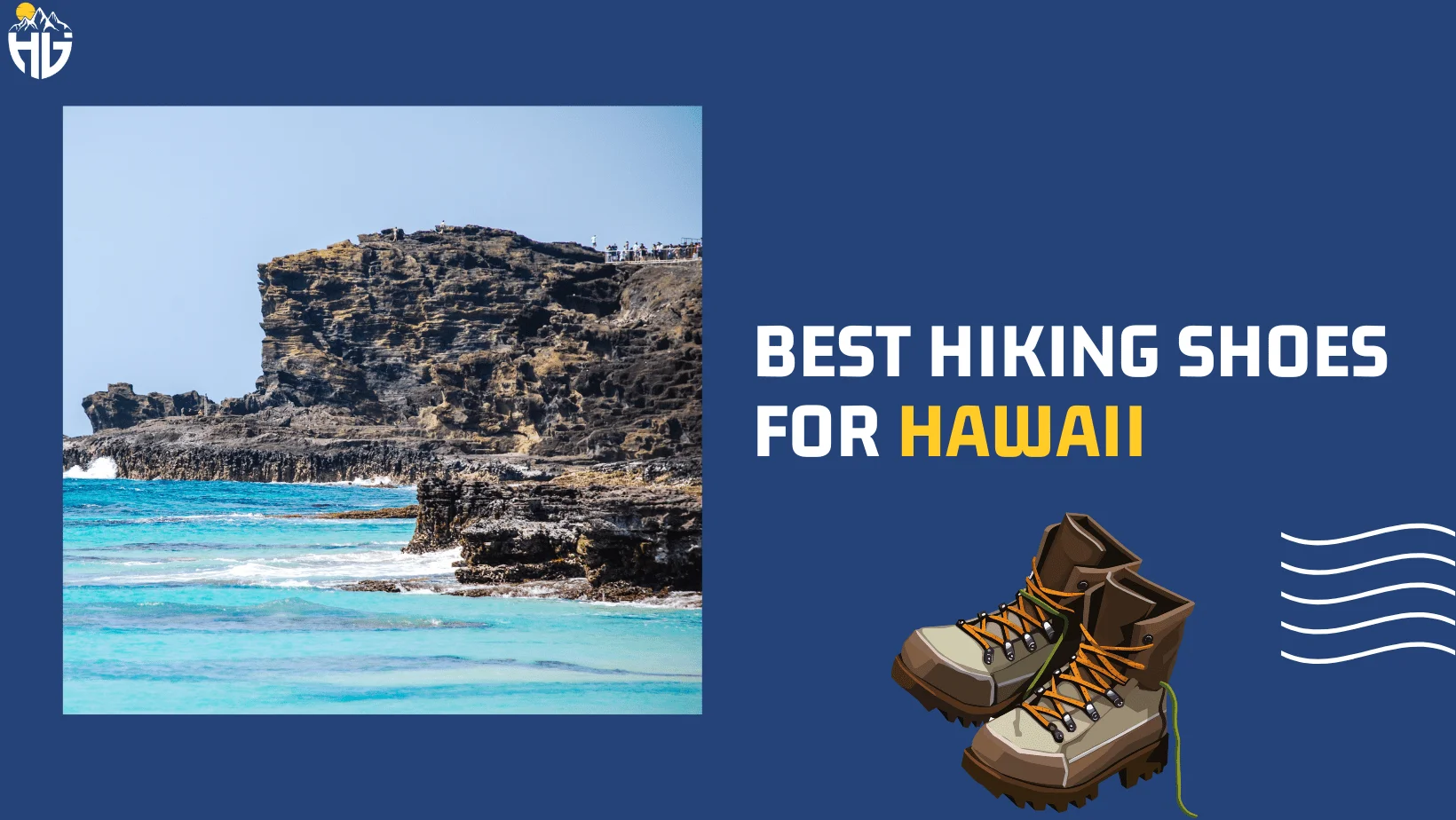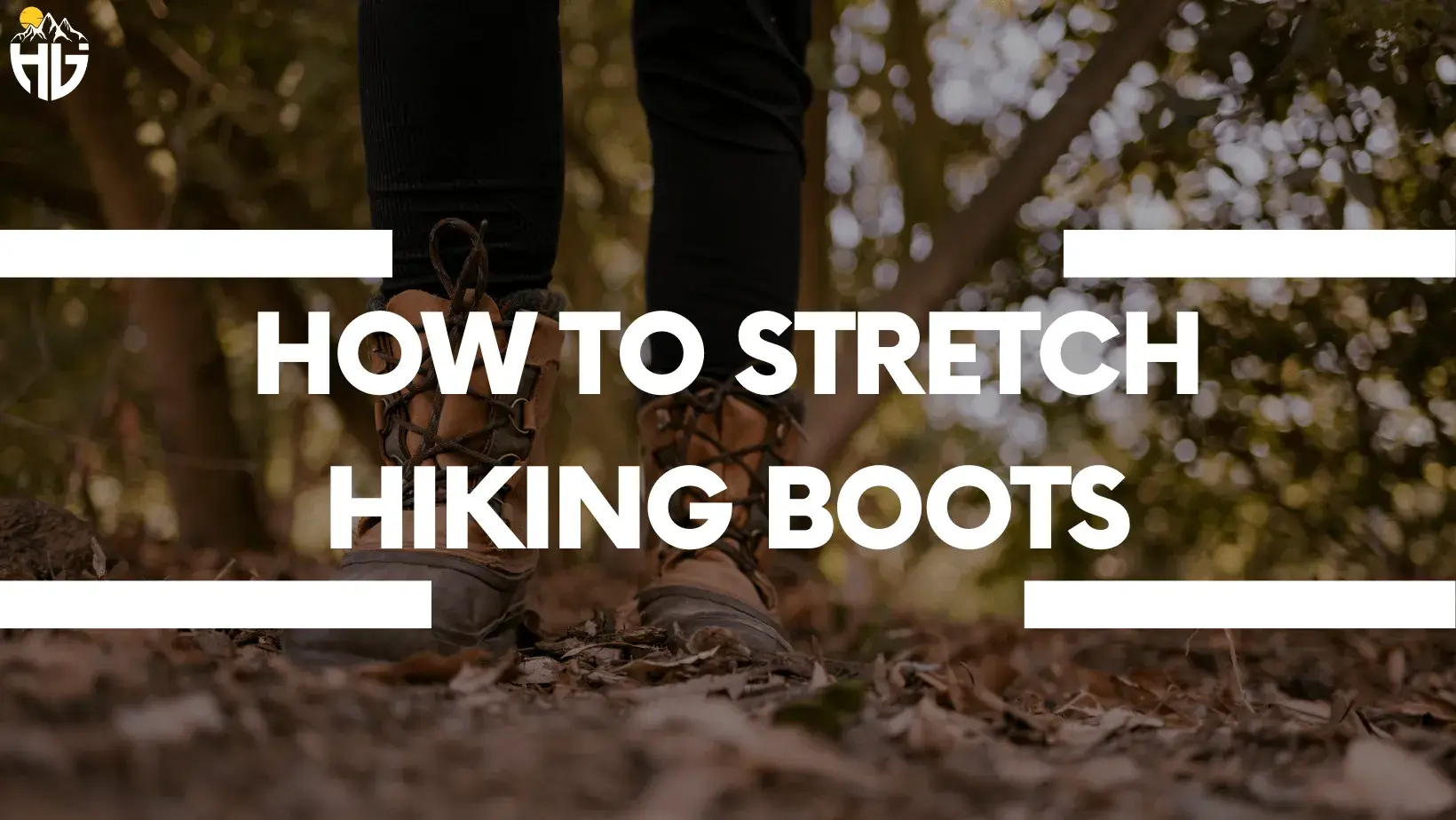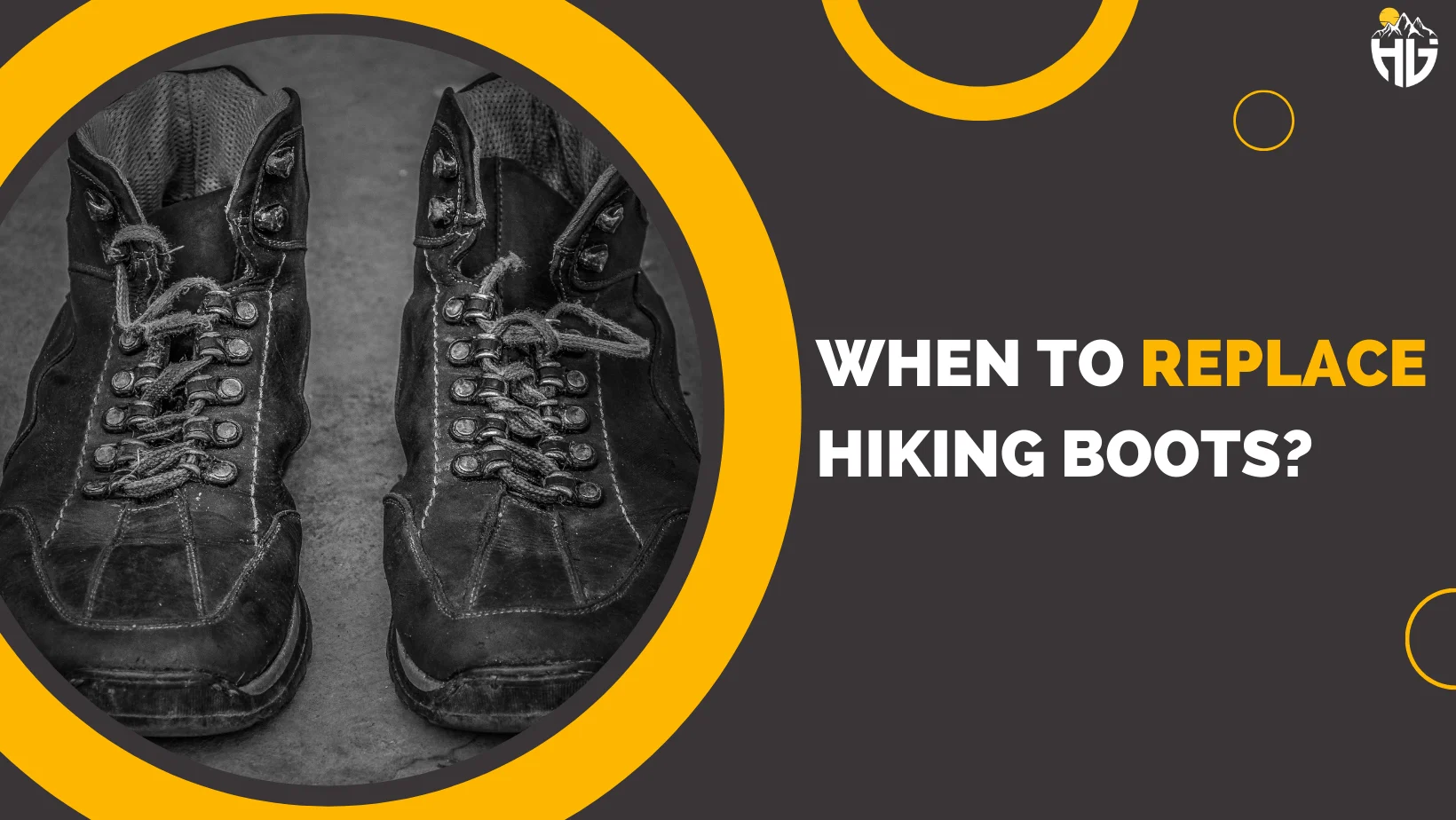How to lace hiking boots for downhill

Hiking downhill presents unique challenges, and having the right technique to lace the hiking boots can provide:
- Ankle Support
- Prevent toe pain
- Enhance your overall hiking experience
Either you’re tackling steep descents or leisurely downhill hikes, having the right lacing technique can prevent discomfort, blisters, and even accidents.
Importance of Proper Boot Lacing
Lacing your hiking boots properly is not just about aesthetics. It’s about optimizing your comfort and performance. It ensures that:
- Your boots fit snugly without being too tight
- Preventing Unnecessary friction and Pressure points
- Provides stability to your ankles
- Reducing the risk of twists and sprains during downhill descents
Basic Boot Lacing Techniques
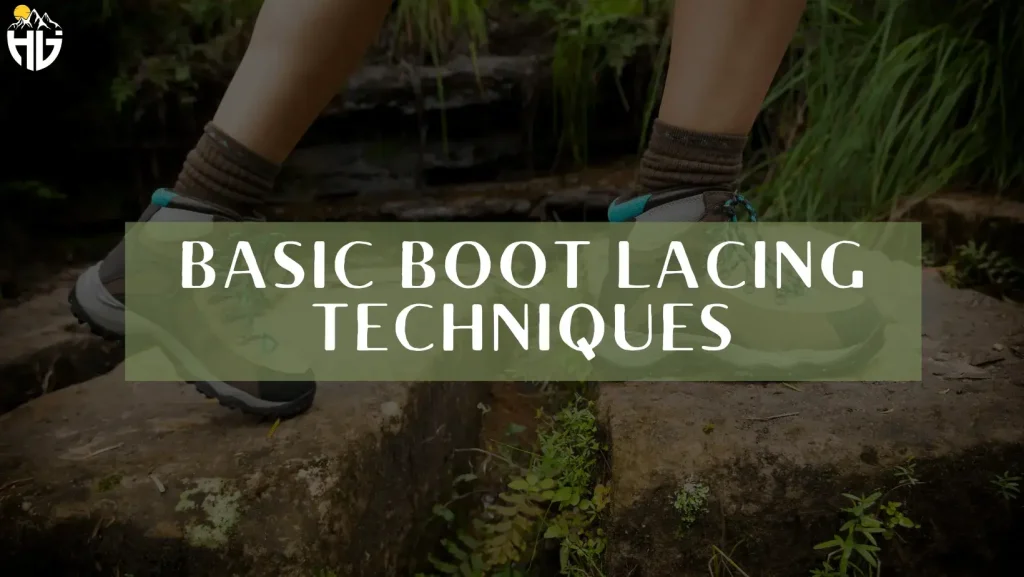
Lacing your hiking boots for downhill hiking might seem like a straightforward task, but mastering different lacing techniques can significantly impact your hiking experience.
These techniques not only keep your boots secure but also address specific challenges that arise during various outdoor activities.
Surgeon’s Knot for Added Security

Start by crossing the laces over each other, then make a loop with one lace and thread the other lace through it. Tighten the loop by pulling both ends, creating a knot. This initial knot provides a solid foundation.
Next, create another loop with the same lace, this time tying it with a double knot. This double-knot loop adds an extra layer of security, preventing the laces from unexpectedly loosening during your hike.
The surgeon’s knot is best way to lace your hiking boots for downhill hiking, especially on uneven terrains. It’s a straightforward technique to keep you focused on the trail ahead.
Also Read
Window Lacing for Customised Fit
This technique is designed to alleviate pressure points and provide a customised fit, making it particularly useful for hikers with high insteps or areas of discomfort.
As you lace your boots, simply skip certain eyelets to create “windows.” These windows allow you to fine-tune the tightness of specific sections while maintaining a secure fit overall.
By focusing on areas that typically experience friction, like the instep or the sides of your feet, you can prevent blisters and discomfort.
Window lacing grants you the flexibility to adapt your lacing pattern to your foot’s unique shape, ensuring a comfortable and enjoyable hiking experience.
Related Post
Are Bean Boots Good for Hiking?
Advanced Boot Lacing Techniques
Toe Relief Lacing for Alleviating Pressure

When hiking downhill, the pressure on the tops of your feet can intensify, causing discomfort and potential pain, hence, lace your hiking boots properly. The toe relief lacing technique is specifically designed to address this issue.
By skipping a few eyelets around the toe box area, you create additional space and reduce pressure on the tops of your feet. This method allows better blood circulation and minimizes the chances of developing sore spots.
As you navigate steep descents where your toes bear much of the impact, the toe relief lacing technique offers a practical solution to keep your feet comfortable and pain-free.
Cross Lacing for Enhanced Stability
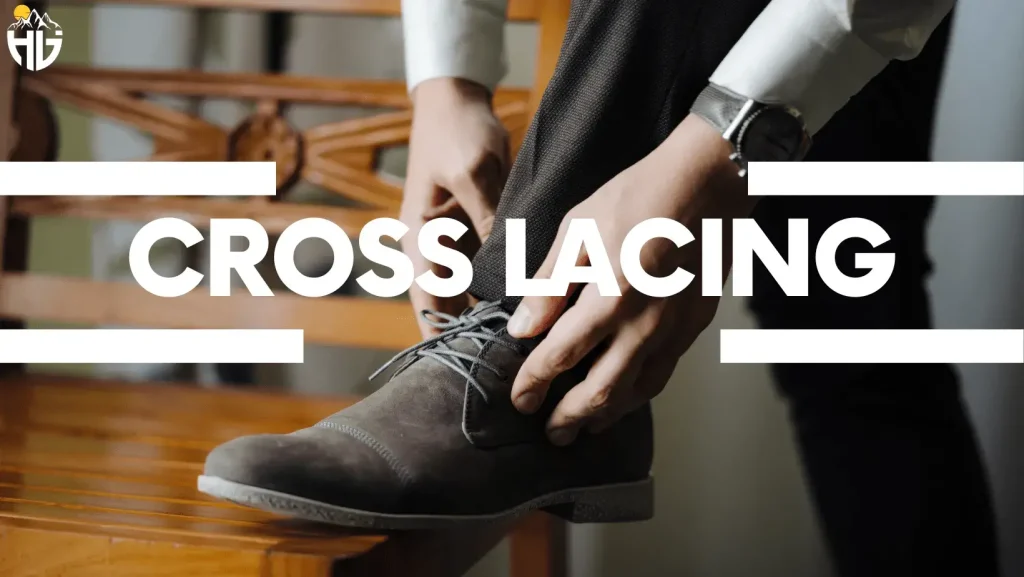
This advanced technique provides enhanced stability and support to your ankles, crucial during steep descents. It involves creating an “X” pattern as you thread the laces through the eyelets.
By doing so, you effectively distribute tension across the length of your boot, creating a secure and stable fit. This technique is particularly beneficial for hikers who seek additional security on challenging surfaces.
It minimises the risk of ankle twists or sprains and allows you to confidently tackle downhill trails. Cross lacing transforms your hiking boots into a fortress of stability, ensuring you can conquer even the most rugged paths with ease.
Lacing Techniques for Specific Needs
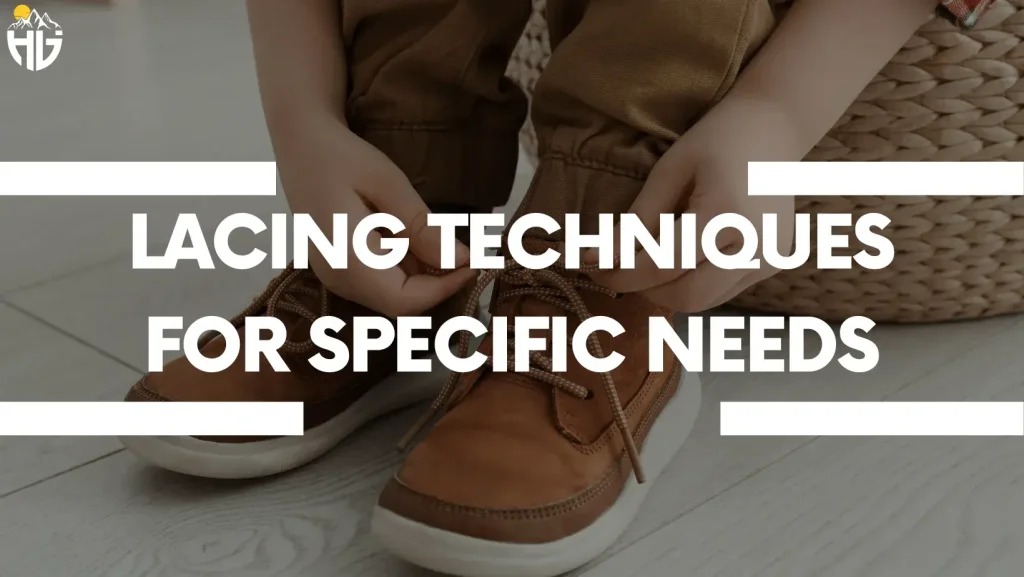
Lacing Hiking Boots for Wide Feet
Using parallel lacing, where the laces run parallel to each other, can create more space within the boot. This method accommodates wider feet without sacrificing proper fit and support.
How to Tie Hiking Boots for Ankle Support?
For those who require extra ankle support, consider the “lace lock” technique. By forming a loop and threading the laces through it, you can create a firm grip around your ankle.
This method prevents excessive movement and minimises the risk of sprains.
How to Lace up Hiking Boots With Hooks?
Lace your hiking boots for downhill, through the lower hooks and gradually move to the upper ones. This technique ensures even distribution of pressure and prevents discomfort caused by uneven lacing.
Lacing Walking Shoes: Tips and Tricks
Lacing techniques aren’t reserved solely for hiking boots; they can also enhance the comfort and performance of your walking shoes.
Heel Lock for Extra Stability
To execute this method: Start by threading the laces through the bottom eyelets as usual. Instead of proceeding straight up to the next eyelets, create a loop with each lace, cross them over each other, and then thread them through the loop on the opposite side.
This creates a locking mechanism that anchors your heel in place. The heel lock technique is particularly useful for those with narrow heels or anyone seeking extra stability during brisk walks or light jogs.
Loop Lacing for Pressure Relief
Just like during hikes, pressure points can develop during extended walks, leading to discomfort or even blisters. Loop lacing is a technique designed to alleviate such pressure, particularly on the tops of your feet.
To achieve this, simply create a loop near the area where you’re experiencing pressure. Thread the laces through these loops, effectively providing extra space and reducing tension on that specific area.
This technique is particularly handy for those wearing walking shoes with laces that extend all the way to the top of the shoe. By strategically placing loops where you feel pressure, you can enjoy a more comfortable and pain-free walking experience.
Adapting Hiking Techniques
Many of the lacing techniques used for hiking boots can also be applied to walking shoes.
Techniques like the heel lock:
- Provides additional stability
Loop lacing:
- Alleviates pressure
It can be beneficial whether you’re trekking up a mountain or strolling through a park. Don’t hesitate to borrow these techniques from the hiking world and integrate them into your walking routine.
Common Challenges When Hiking Downhill
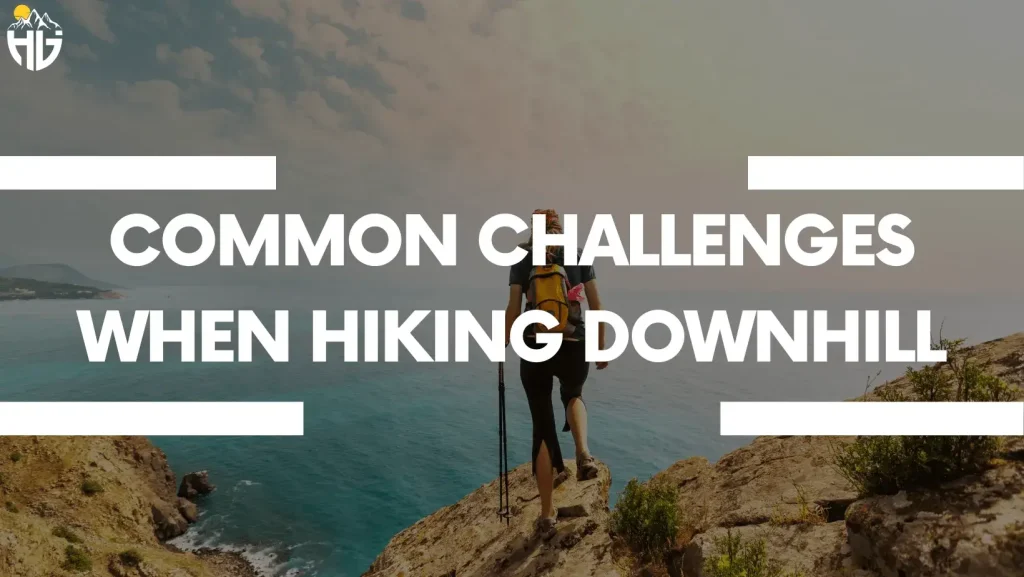
Hiking downhill presents hikers with a unique set of challenges that require special consideration. As you descend, your body weight shifts differently, placing increased pressure on your feet, ankles, and knees.
This shift in weight distribution, combined with the constant braking action required to control your pace, can lead to various discomforts and issues if not addressed properly
Toe Pain and Pressure
When your toes continuously press against the front of your boots, they can become sore and develop painful blisters. This discomfort can not only ruin your hike but also affect your overall experience.
Lace your hiking boots that focus on relieving pressure on the toes, such as the toe relief lacing method, can significantly alleviate this problem during downhill hiking.
Heel Slippage
The constant downward motion can lead to your feet sliding within your boots, causing heel slippage. This can be particularly problematic, as it not only causes discomfort but can also lead to blisters forming on your heels.
Utilising techniques that offer a snug fit around the ankle, like the lace lock technique, can effectively minimise heel slippage and provide extra stability.
Ankle Instability
Hiking downhill requires constant adjustments to maintain your balance, which puts additional strain on your ankles. Without proper support, this can lead to ankle twists or sprains.
Lacing methods that prioritise ankle support, such as the lace lock or cross lacing techniques, can provide the necessary reinforcement to keep your ankles secure during the descent.
Toe Box Discomfort
When hiking downhill, your feet are positioned at an angle, causing your toes to press against the front of the boots. This can lead to discomfort and even the development of calluses and blisters in the toe box area.
Employing techniques that alleviate pressure on the tops of your feet, like the window lacing method, can offer relief and reduce the risk of these issues.
Inadequate Ankle Flexion
Hiking downhill often requires more flexion in the ankles than uphill or flat terrain. If your boots are laced too tightly, it can restrict this natural movement, leading to discomfort and even pain.
Lacing techniques that strike a balance between stability and flexibility, like the parallel lacing method for wider feet, can provide the necessary support while allowing your ankles to move comfortably.
Blisters and Hotspots
Downhill hiking increases the friction between your feet and the inside of your boots, making blisters and hotspots more likely. Ensuring a secure fit and using techniques to reduce movement.
Such as the surgeon’s knot for added security, can help prevent these painful issues from arising.
Conclusion
Lacing your walking shoes isn’t just a matter of aesthetics; it’s a practical way to optimise your comfort, prevent discomfort, and improve your overall walking experience.
By incorporating these tips and tricks, you can ensure that your feet are well-supported and free from pain during every step of your journey.
So, next time you slip on your walking shoes, remember that a few strategic lacing adjustments can make all the difference in how far and how comfortably you go.
FAQs
Can I use these lacing techniques for any type of shoes, or are they specific to hiking boots?
While these techniques are often associated with hiking boots, many of them can be applied to a variety of footwear, including walking shoes, running shoes, and even casual sneakers.
How do I determine which lacing technique is best for my foot shape and needs?
Experimentation is key. Try different techniques on short walks or hikes to see which provides the most comfort and support. You can also consult with footwear experts for personalised recommendations.
Will these lacing techniques completely eliminate the risk of blisters?
While these techniques can significantly reduce the risk of blisters, it’s important to ensure that your shoes fit well and are made of appropriate materials. Proper sock choice and maintaining good foot hygiene also play a role in blister prevention.
Should I re-adjust my laces during a long hike, or will they remain secure?
Laces may gradually loosen over time due to natural movement. It’s a good practice to periodically check and re-adjust them during extended hikes to maintain a snug fit and prevent discomfort.
Can I combine different lacing techniques for a customised fit?
Absolutely! Feel free to experiment by combining techniques to address specific comfort concerns. Just ensure that the resulting lacing pattern remains secure and doesn’t cause discomfort.
Are these lacing techniques suitable for all skill levels of hikers and walkers?
Yes, these techniques are designed to be accessible to hikers and walkers of all skill levels. They provide practical solutions to common comfort and support challenges.
How often should I replace my shoelaces?
Shoelaces can wear out over time, especially with frequent use. If you notice fraying, damage, or reduced elasticity, it’s a good idea to replace them to maintain the effectiveness of your lacing techniques.
Can I use these techniques with any type of shoelaces?
Yes, these techniques can be used with most types of shoelaces, including round, flat, and elastic laces. Just ensure that the laces are securely threaded through the eyelets.
Are there any specific lacing techniques that provide arch support?
While these techniques primarily focus on fit, stability, and pressure relief, they indirectly contribute to overall foot comfort, which can include arch support. For specific arch support needs, consider using specialised insoles.
Can I find video tutorials for these lacing techniques online?
Absolutely, many footwear and outdoor enthusiasts share video tutorials demonstrating these lacing techniques, providing visual guidance on proper execution and adjustments.



